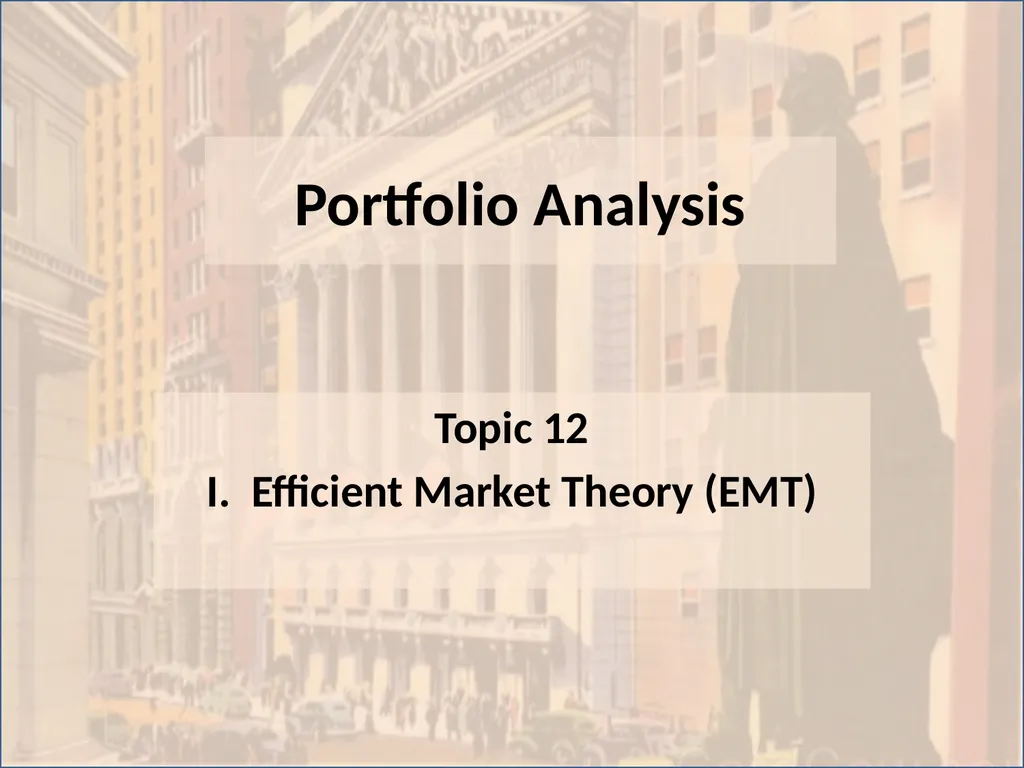
Author : jane-oiler | Published Date : 2025-05-10
Description: Portfolio Analysis Topic 12 I. Efficient Market Theory (EMT) Efficient Market Theory Where did EMT come from? What is the Efficient Market Theory? What does it Imply? How can it be tested? What conclusions can we draw about marketDownload Presentation The PPT/PDF document "" is the property of its rightful owner. Permission is granted to download and print the materials on this website for personal, non-commercial use only, and to display it on your personal computer provided you do not modify the materials and that you retain all copyright notices contained in the materials. By downloading content from our website, you accept the terms of this agreement.
Here is the link to download the presentation.
"Portfolio Analysis Topic 12 I. Efficient Market"The content belongs to its owner. You may download and print it for personal use, without modification, and keep all copyright notices. By downloading, you agree to these terms.













